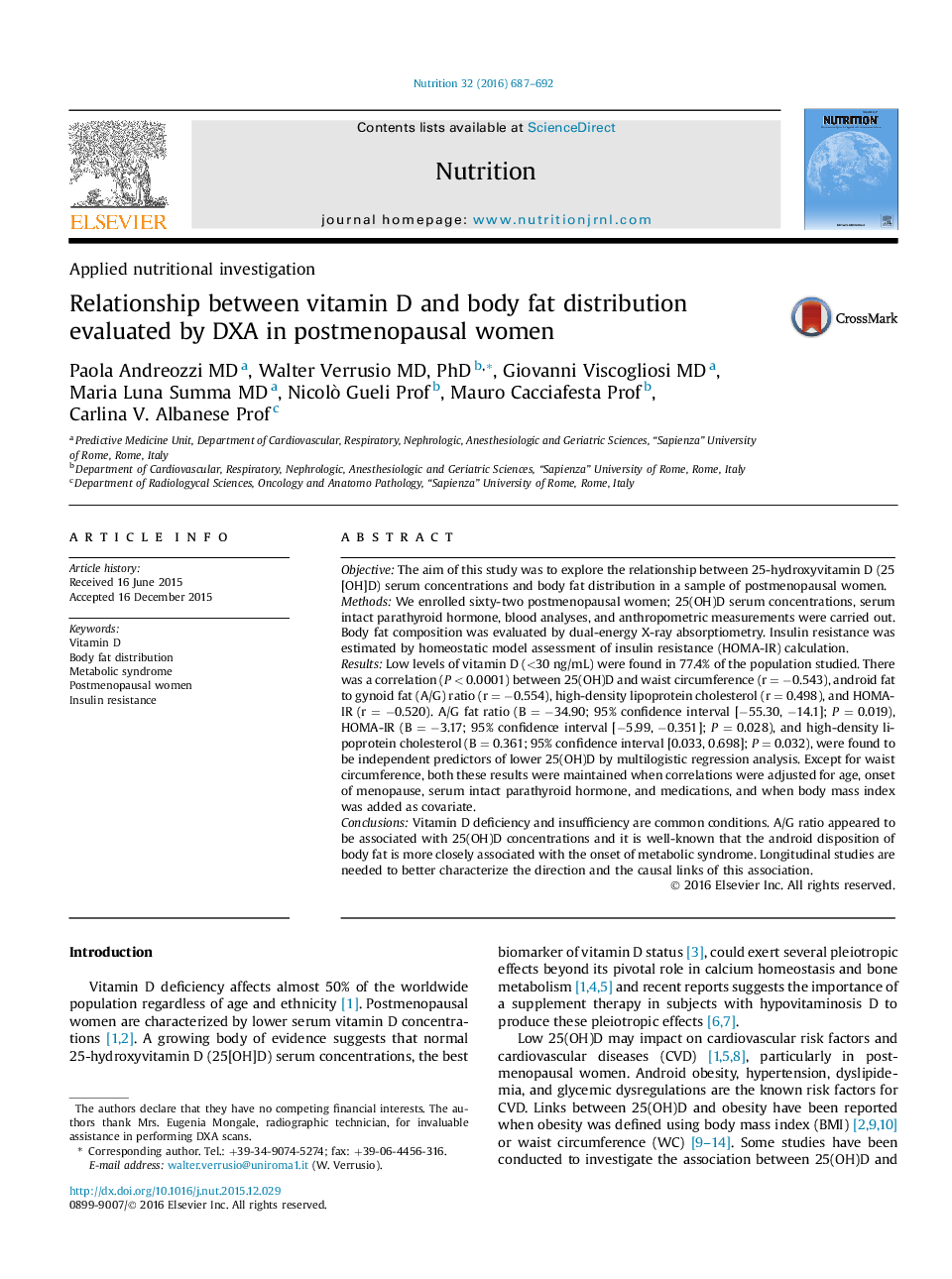| Article ID | Journal | Published Year | Pages | File Type |
|---|---|---|---|---|
| 6088976 | Nutrition | 2016 | 6 Pages |
â¢We assume a relationship between 25-hydroxyvitamin D levels and body fat distributionâ¢Vitamin D deficiency and insufficiency are common conditions, especially in postmenopauseâ¢Serum 25-hydroxyvitamin D could be independently associated with android to gynoid ratio, insulin resistance, and high-density lipoprotein cholesterolâ¢The android disposition of body fat is more closely associated to the onset of metabolic syndrome
ObjectiveThe aim of this study was to explore the relationship between 25-hydroxyvitamin D (25[OH]D) serum concentrations and body fat distribution in a sample of postmenopausal women.MethodsWe enrolled sixty-two postmenopausal women; 25(OH)D serum concentrations, serum intact parathyroid hormone, blood analyses, and anthropometric measurements were carried out. Body fat composition was evaluated by dual-energy X-ray absorptiometry. Insulin resistance was estimated by homeostatic model assessment of insulin resistance (HOMA-IR) calculation.ResultsLow levels of vitamin D (<30 ng/mL) were found in 77.4% of the population studied. There was a correlation (P < 0.0001) between 25(OH)D and waist circumference (r = â0.543), android fat to gynoid fat (A/G) ratio (r = â0.554), high-density lipoprotein cholesterol (r = 0.498), and HOMA-IR (r = â0.520). A/G fat ratio (B = â34.90; 95% confidence interval [â55.30, â14.1]; P = 0.019), HOMA-IR (B = â3.17; 95% confidence interval [â5.99, â0.351]; P = 0.028), and high-density lipoprotein cholesterol (B = 0.361; 95% confidence interval [0.033, 0.698]; P = 0.032), were found to be independent predictors of lower 25(OH)D by multilogistic regression analysis. Except for waist circumference, both these results were maintained when correlations were adjusted for age, onset of menopause, serum intact parathyroid hormone, and medications, and when body mass index was added as covariate.ConclusionsVitamin D deficiency and insufficiency are common conditions. A/G ratio appeared to be associated with 25(OH)D concentrations and it is well-known that the android disposition of body fat is more closely associated with the onset of metabolic syndrome. Longitudinal studies are needed to better characterize the direction and the causal links of this association.
